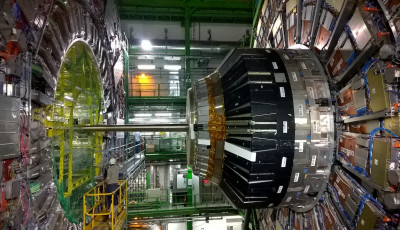In this post, I will discuss the trends currently shaping the supply chain and logistics industry, drawing inspiration from a recent visit to the Supply Chain & Logistics Innovation Summit in Amsterdam. I will also explore how technology can enable companies to thrive in this evolving landscape.
The Supply Chain & Logistics Innovation Summit is an annual gathering for global supply chain and logistics professionals. It took place for the seventh time in Amsterdam, offering a unique perspective on the sector’s developments. Below are three key takeaways from the summit, along with my perspectives on how technology can counterbalance the effect of current trends:
Volatility is the new normal
Supply chains are inherently unstable – this was a common belief in the industry for a long time. However, the past four years have redefined the meaning of instability.
No one was prepared for the disruptions we have witnessed in the past four years, caused by the wars in Ukraine and the Middle East, problems at the Suez Canal, the global chip shortage, new regulations such as the Corporate Sustainability Due Diligence Directive (CSDDD) and Import Control System 2 and 3 (ICS2, 3), and the elections in the United States which could have global repercussions.
The consensus in Amsterdam was clear – businesses must proactively adapt to the new reality of volatility to make supply chains more resilient.
Supply chain transparency becomes crucial during disruptions. Here, technology emerges as a reassuring ally. IT systems can make supply chains more efficient and responsive to customer needs and market demands throughout the entire lifecycle. IoT and sensor technology, advanced data analytics, and cloud computing empower businesses to achieve real-time product tracking, optimize inventory management, and gain actionable insights into supply chain operations.
Furthermore, industry experts acknowledge the importance of expanding supply chain visibility to include third-tier suppliers and seamlessly integrating them. That type of integration is challenging from the business side as well as in IT. Still, it is essential in improving efficiency, managing risks, and providing end-to-end visibility.
AI improves supply chain visibility through advanced data analytics, reducing uncertainty and enhancing predictive accuracy. AI algorithms analyze large datasets, including historical consumption patterns, market trends, and geopolitical shifts, providing valuable insights into supply chain dynamics. For instance, AI-based systems can proactively recommend companies to change suppliers in response to increasing geopolitical uncertainty, predicting potential disruptions. The full potential of this technology is yet to be fully realized.
The new supply chain landscape balances people, technology, and processes
Another topic highlighted during the summit was the growing significance of talent retention in the transition away from manual work. While technology is an enabler of success, people will always remain more important as they are the ones who enable technology.
We are already seeing robots handling goods in warehouses and chatbots responding to customer inquiries, while computers are gradually taking over planning-related tasks from humans. As automation and generative AI make more jobs obsolete, businesses must educate and support their team members to maintain motivation and keep them within the company in other roles.
Companies must anticipate the skills needed for future success and proactively guide their teams toward developing those skills. Several speakers emphasized the importance of soft skills in future roles. Key areas include fostering innovation, improving communication effectiveness, embracing a customer-centric approach, and mastering stakeholder management. These skills are increasingly recognized as essential for navigating complex business landscapes and driving sustainable growth.
How can we adapt to the rapidly changing new supply chain landscape?
Finding a reliable digitalization partner is crucial. Partnering with a service provider with expertise in automation and digitalization can significantly speed up a company’s innovation trajectory. It eliminates the need to build all the necessary know-how in-house and allows the company to benefit more quickly from the latest technologies. Time is a critical factor in innovation, and this approach can help save it.
The shift towards sustainability happens in all dimensions
Another major global trend in the supply chain industry is a significant shift towards sustainability. Stakeholders, from shareholders to potential employees, have new expectations and concerns regarding companies’ environmental, social, and corporate responsibility.
There are various ways to reduce the impact on the supply chain and logistics sector that extend beyond measuring CO2 emissions from air and road traffic. Achieving true sustainability involves taking a comprehensive view of the supply chain from the moment an order is placed until the final delivery to the customer.
The design of a supply chain aims to find the best real-world solutions, including identifying the most suitable facility locations, determining the most efficient transportation routes, and optimizing inventory management. In addition, a company needs to ensure its IT systems, from architecture to cloud solutions, align with sustainability principles.
For instance, given the AI revolution, it’s crucial to acknowledge that AI solutions can be major energy consumers. Therefore, sustainability should be a priority when planning a new IT development. At Helmes, we specialize in green software development and integrate sustainable practices throughout our projects.
Winners already invest in digitalization
A recurring idea repeatedly surfaced during the conversations: although investing in technology and digitalization may appear expensive initially, the cost of doing nothing will be much higher; inaction will result in decreased performance and efficiency. The gap between companies that invest in digitalization now and those that don’t will only widen in time.
Helmes has extensive experience assisting companies in implementing their supply chain design plans by providing software development services to global clients. This includes developing transport management systems, warehouse management systems, control tower solutions, and e-commerce logistics solutions.
Our domain knowledge, technology, and project management expertise allow us to function as an extended team for our clients, helping to accelerate their journey toward innovation.
Please contact me if you’d like to learn more about our experience in the supply chain industry or how digitalization can benefit your company.
Get in touch




